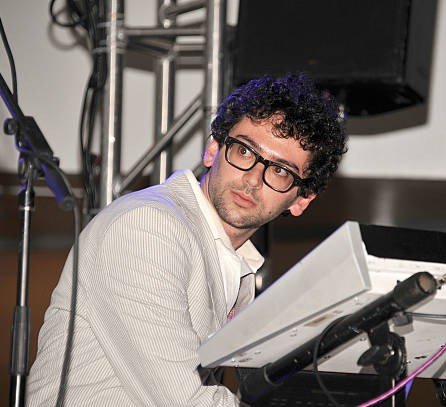Ben Goldwasser: The Sonic Visionary Behind MGMT’s Psychedelic Sound
Exploring the Life, Artistry, and Legacy of One of Indie Rock’s Most Influential Figures

Ben Goldwasser is far more than just a co-founder of the iconic indie band MGMT. He’s a boundary-pushing composer, synthesizer aficionado, and creative mind whose influence has permeated the music world since the early 2000s. From his academic roots in music theory to his experimentation with sonic textures that defined an era, Goldwasser continues to shape the future of alternative and psychedelic rock. This article delves deep into his journey, musical philosophy, and ongoing contributions to modern music.
Early Life and Musical Roots

Benjamin Nicholas Hunter Goldwasser was born on December 17, 1982, in Mishawaka, Indiana, and raised in Westport, New York. His exposure to music began early, learning piano from his mother and grandmother. The emotional pull of melodies and chord structures fascinated him, eventually steering him toward a path of music that would redefine the genre.
Goldwasser’s upbringing wasn’t marked by mainstream influences alone. He attended a rock and roll camp in Vermont and was intrigued by avant-garde and experimental sounds. Artists like Adrian Belew and Suicide left a lasting impression on his young mind, teaching him that music could be both beautiful and dissonant.
Wesleyan University: Where It All Began
Ben Goldwasser’s path took a pivotal turn at Wesleyan University in Middletown, Connecticut. There, he pursued a degree in music, immersing himself in experimental composition, electronic music, and performance art. It was at Wesleyan that he met Andrew VanWyngarden, with whom he would later form MGMT.
Initially bonding over absurd musical performances and a shared love for irony-laced pop, the duo adopted the name “The Management,” which was later changed to MGMT due to legal reasons. Goldwasser’s academic background allowed him to bring a layer of musical sophistication and technical prowess that shaped MGMT’s unique identity.
MGMT: A Psychedelic Revolution
In 2002, MGMT was born. Blending synth-pop, psychedelic rock, and glam influences, their early work was a breath of fresh air in the indie scene. Goldwasser’s synthesizers became a hallmark of the band’s sound—rich, haunting, and unapologetically surreal.
Oracular Spectacular: A Breakthrough
The band’s debut studio album, Oracular Spectacular, released in 2007, catapulted them into international fame. Tracks like “Time to Pretend,” “Electric Feel,” and “Kids” showcased Goldwasser’s ability to create infectious melodies layered with ethereal textures.
- “Time to Pretend” became an anthem for youth disillusionment.
- “Electric Feel” won a Grammy for Best Remixed Recording (Justice remix).
- “Kids” introduced a chaotic yet beautiful arrangement that defined MGMT’s sound.
Goldwasser’s synth work on this album was nothing short of revolutionary, capturing nostalgia, rebellion, and futurism all at once.
Evolving Sounds: Pushing Boundaries
Following the massive success of their debut, Goldwasser and VanWyngarden chose not to rest on their laurels. Their second album, Congratulations (2010), took a sharp turn away from pop conventions, embracing progressive and psychedelic elements.
The album was not crafted for commercial success but as a statement. Tracks like “Flash Delirium” and “Siberian Breaks” offered sprawling compositions that defied genre classification. Goldwasser’s role became more prominent in this phase—handling intricate arrangements, production decisions, and sonic explorations.
MGMT and Little Dark Age: A Return to Structure
MGMT’s self-titled third album in 2013 further explored avant-garde directions, and though it received mixed reviews, it cemented their commitment to artistry over conformity. Goldwasser’s experimentation with modular synths and analog equipment added depth to the album’s complex soundscape.
In 2018, MGMT released Little Dark Age, which was seen as a return to form. The title track, “Little Dark Age,” and other singles like “Me and Michael” struck a balance between accessibility and innovation. Goldwasser’s refined production skills, coupled with years of experimentation, resulted in a cohesive and hauntingly beautiful record.
More Read: Micky Bartlett: Northern Ireland’s Comedy Dynamo Redefining Stand-Up
Goldwasser’s Signature Style and Gear
Ben Goldwasser isn’t just a musician—he’s a sonic architect. His gear choices are meticulous, often blending analog synthesizers like the Moog Voyager and Prophet-5 with digital layering. This hybrid approach allows him to traverse musical dimensions few dare to explore.
Key traits of Goldwasser’s style include:
- Lush, layered synths that serve as both melody and atmosphere.
- Non-linear song structures that challenge traditional formats.
- Textural transitions that make songs feel like immersive journeys.
Goldwasser is also known for avoiding overproduction. He embraces imperfections, allowing ambient noise and raw transitions to add character to the final track.
Outside MGMT: Collaborations and Film Work
Ben Goldwasser has expanded his horizons beyond MGMT. One notable project is his collaboration with Karen O on the score for the animated film Where Is Anne Frank (2021). The soundtrack blends orchestral elements with Goldwasser’s electronic textures, providing emotional depth to the film.
He’s also been involved in production and songwriting for various indie and experimental artists, offering mentorship and technical expertise behind the scenes.
Philosophy: Music as a Living, Breathing Entity
Goldwasser often views music as an evolving, living form. In interviews, he emphasizes the importance of intention behind every sound. He believes that music should provoke thought and evoke emotion—even if it’s not always comfortable.
His academic background has influenced this approach. He often cites minimalist composers and avant-garde performance art as sources of inspiration, pushing him to go beyond melody and rhythm to explore music as conceptual art.
Cultural Impact and Legacy
The cultural impact of Ben Goldwasser is undeniable. His work has inspired a generation of indie and experimental musicians to prioritize authenticity over trends. MGMT’s debut album still finds its way into films, commercials, and playlists, a testament to its timeless appeal.
Goldwasser’s influence can also be seen in the resurgence of synth-pop and psychedelic aesthetics in today’s indie scene. Artists like Tame Impala, Unknown Mortal Orchestra, and Beach House have followed similar sonic paths, blending vintage tones with modern sensibilities.
Personal Life and Values
While Goldwasser keeps his personal life relatively private, it’s known that he currently resides in Los Angeles. He values artistic independence, collaboration, and exploration over commercial validation. His Jewish heritage and upbringing also inform his worldview, though he tends to focus more on universal themes in his music.
Goldwasser is also vocal about environmental and social issues, occasionally using his platform to advocate for progressive causes. His music, while not overtly political, often touches on themes of existential reflection, societal disillusionment, and emotional authenticity.
Future Prospects
As of now, MGMT continues to produce new material under their own label, MGMT Records. Goldwasser is also expected to explore more film scores and potentially launch solo projects that dive deeper into ambient and experimental genres.
His legacy is far from finished. With a career built on curiosity, craftsmanship, and courage, Ben Goldwasser is poised to remain a central figure in the evolution of modern music.
Conclusion
Ben Goldwasser is more than a co-founder of MGMT. He is a musical philosopher, an innovator, and a craftsman of sound. From his academic roots to the global stage, his journey reflects an unwavering commitment to artistic truth. In a world often dominated by formula and fleeting trends, Goldwasser’s music stands as a reminder of what happens when imagination meets intention.
Bold, atmospheric, and endlessly inventive—Ben Goldwasser’s story is still being written.
Explore his music. Hear the textures. Feel the vision.
Discover the immersive world of Ben Goldwasser—where sound becomes art.



